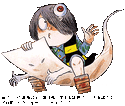
|
This article is a stub. You can help the GeGeGe no Kitarō Wiki by expanding it. |
The fifth anime was aired from April 1, 2007 to March 29, 2009. It ran for 100 episodes. This series was notable for portraying Neko-Musume as a main rather than supporting cast member and for taking place primarily at the setting of Yōkai Yokochō.
Story
"Hello, humans. My name is GeGeGe no Kitarō. If strange or mysterious things happen around you, it is undoubtedly the work of a yōkai. In many cases, yōkai just cause mischief or will only threaten humans. However, please be careful. I can't guarantee that there are other yōkai that will understand you humans like we do. There are yōkai that target and attack humans. It would mean serious trouble if you came across them. Standing your ground with human abilities alone will not be enough. The truth is, yōkai are amazing. Honestly, my friends and I are allies of humans; we're the ones that solve incidents by defeating evil yōkai. With that being said, if anything scary happens, please call out for me! My dad, Neko-Musume, Sunakake-Babaa, Konaki-Jijii and the others will continue to protect you from fearsome yōkai! Next time, we will appear in front of you!"
About
As established with the title of the first epsiode, "The Street Where Yōkai Dwell", this series stood out for focusing primarily on the lives and struggles of the yōkai like on Yōkai Yokochō. The style mixes social commentary and pop culture trends, and each episode starts with Kitarō narrating to the audience in a darkened area to build anticipation for the story.
Other unique elements to this series include the depiction of Kitarō as several decades old but still with the body of a child. He is also more willing to punish humans who commit wicked deeds, especially if children are involved. Neko-Musume is promoted from supporting cast to main heroine and appears in every episode along with Kitarō and Medama-Oyaji. In contrast, Nezumi-Otoko has a significantly smaller role, whereas in the past he appeared in all but a couple of episodes throughout the other four adaptations. Although his basic treatment was unchanged, there were several episodes early on where he barely appeared or didn't appear at all. There are also several episodes that are treated as sequels to classic stories, or episodes that are adaptations of classic stories but have a mostly original plot. In the episodes that referenced past cases, the exact details of the cases were left unclear, and elements from the original stories were mixed in with the new plot. For example, in episode #3 they mention having fought Yasha in the past and implications are made he is the same character from the fourth series. Writer Keiichi Hasegawa claims to not be aware of the referrences, but head writer Riku Sanjō has suggested it's easier for the fans to think it's the older characters.
The Yōkai Post is used less frequently, and more often it is Neko-Musume who informs Kitarō of yōkai activity.
Yōkai who had usually only made a handful of appearance in past adaptations, such as Kawauso and Azuki-Arai, are given far more screen time and battle appearances, though as a result of this, the regular Kitarō Family members have a somewhat smaller presence. Weapons like the Yōkai Ocarina and close human allies like Yumeko Tendō or Yūko Murakami are absent this time around, although there is a recurring human character in Makoto Washio. However, the team of Nurarihyon and Shu no Bon were brought back as the main antagonists. Unlike previous adaptations, Nurarihyon is depicted as a completely legitimate threat with very few comical moments, although he does show a shred of humanity. He was also depicted with more regular minions other than Shu no Bon and even gathered some as the series progressed. The Western Yōkai, who had always made only one appearance in previous adaptations, were also made recurring antagonists. Other long term plans of the series included the 47 Yōkai Warriors, allies of Kitarō's representing each of the 47 prefectures of Japan who were to be introduced gradually.
In an interview with "Otona Anime", Sanjō expressed interest in building the show to run for several years, but the series was abruptly cancelled to make room for the series "Dragon Ball Kai". A lot of stories were left unsettled and so many staff and voice actors of the series referred to the cancellation as a hiatus. In the outro for the final episode, Kitarō even implies the series may continue at a future date. Following the cancellation, Kitarō's voice actress Minami Takayama and other staff members teamed up with Shigeru Mizuki to begin campaigning for a continuation of the series, even campaigning at the World Yōkai Association's annual event in Kyoto at the Toei Kyoto Studio Park.
The entire series was shot digitally, in contrast to the previous series which didn't go digital until episode 64. It was broadcast in widescreen for the terrestrial broadcast and it was displayed in high definition, though this was actually done with upscaling. It was originally cut to full screen for analogue broadcasts, but in December 2008 this changed to letterbox.
Theme Songs
- Opening
- GeGeGe no Kitarō - Shigeru Izumiya {Ep. 1~51)
- GeGeGe no Kitarō - The 50 Kaitens (Ep. 52~100)
- Endings
- Urameshi Ya - Hidekazu Nagai (Ep. 1~26)
- Yōkai Yokochō GeGeGe Bushi - Junichi Suwabe (Ep. 27~51)
- Kakumei no Uta ~Diggin'~ - Rock'a'Trench (Ep. 52~64)
- Natsu no Mamono - Tsuru (Ep. 65~76)
- Star Fruits - Merengue (Ep. 75~89)
- Mikazuki to Kitakaze - Hi Lockation Markets (Ep. 90~100)
Episodes
| # | Title | Original airdate | Written by | Directed by | Animation director | Yōkai |
| 001 | The Street Where Yōkai Dwell Yōkai no Sumu Machi (妖怪の棲む街) |
2007-04-01 | Suiko | |||
|---|---|---|---|---|---|---|
| 001 | BiBiBi!! Nezumi-Otoko! BiBiBi!! Nezumi-Otoko! (ビビビ!! ねずみ男!) |
2007-04-08 | Gasha-Dokuro | |||
|---|---|---|---|---|---|---|
| 003 | The Mysterious Melody! Yasha Ayashiki Senritsu! Yasha (妖しき旋律! 夜叉) |
2007-04-15 | Yasha | |||
|---|---|---|---|---|---|---|
| 004 | Be a Man! Ittan-Momen Otoko! Ittan-Momen (男! 一反もめん) |
2007-04-22 | Umizatō | |||
|---|---|---|---|---|---|---|
| 005 | The Cursed Movie Norowareta Eiga (呪われた映画) |
2007-04-29 | Numa-Gozen | |||
|---|---|---|---|---|---|---|
| 006 | Great Panic! Yōkai Yokochō Dai Panikku! Yōkai Yokochō (大パニック! 妖怪横町) |
2007-05-06 | Nobiagari | |||
|---|---|---|---|---|---|---|
| 007 | Burn! Medama-Oyaji Moero! Medama-Oyaji (燃えろ! 目玉おやじ) |
2007-05-13 | Yuki-Onna Mashiro | |||
|---|---|---|---|---|---|---|
| 008 | An Old Adversary! Nurarihyon Shukuteki! Nurarihyon (宿敵! ぬらりひょん) |
2007-05-20 | Nurarihyon | |||
|---|---|---|---|---|---|---|
| 009 | The Ghost Train Goes to the Other World Yūrei Densha Anoyo Iki (ゆうれい電車あの世行き) |
2007-05-27 | ||||
|---|---|---|---|---|---|---|
| 010 | The Almighty God! Raijū Araburu Kami! Raijū (荒ぶる神! 雷獣) |
2007-06-03 | Raijū | |||
|---|---|---|---|---|---|---|
| 011 | Obake Comedy Obake Manzai (おばけ漫才) |
2007-06-10 | Hakusanbō | |||
|---|---|---|---|---|---|---|
| 012 | Ringtone from the Spirit World Reikai kara no Chakushin-on (霊界からの着信音) |
2007-06-17 | Itsu-Maden | |||
|---|---|---|---|---|---|---|
| 013 | Working Hard! Nurikabe the Bodyguard Funtō! Nurikabe Yōjinbō (奮闘! ぬりかべ用心棒) |
2007-06-24 | Ōmukade | |||
|---|---|---|---|---|---|---|
| 014 | Kitarō Dies!? Gyūki Reborn Kitarō Shisu!? Gyūki Fukkatsu (鬼太郎死す!? 牛鬼復活) |
2007-07-01 | Gyūki | |||
|---|---|---|---|---|---|---|
| 015 | Work! Medama-Oyaji Hataraku! Medama-Oyaji (働く! 目玉おやじ) |
2007-07-08 | Sakabashira | |||
|---|---|---|---|---|---|---|
| 016 | Yōkai are Game Masters?! Yōkai wa Gēmu no Tatsujin?! (妖怪はゲームの達人?!) |
2007-07-15 | Shōkera | |||
|---|---|---|---|---|---|---|
| 017 | Wandering Priest Aobōzu Sasurai no Aobōzu (さすらいの蒼坊主) |
2007-07-22 | Aobōzu | |||
|---|---|---|---|---|---|---|
| 018 | Black Eyes that Glow in the Old Castle Kojō ni Hikaru Kuroi Me (古城に光る黒い眼) |
2007-08-05 | Mokumokuren | |||
|---|---|---|---|---|---|---|
| 019 | The Kappa Pond Sumo Tournament Kappa-chi no Sumō Taikai (河童池の相撲大会) |
2007-08-12 | Kappa | |||
|---|---|---|---|---|---|---|
| 020 | Voice From the Darkness! Ghost Spot Yami kara no Koe! Yūrei Supotto (闇からの声! 幽霊スポット) |
2007-08-19 | Uwan | |||
|---|---|---|---|---|---|---|
| 021 | Madly in Love? Yōkai Love Story Kubittake? Yōkai Koi Monogatari (首ったけ? 妖怪恋物語) |
2007-08-26 | Odoro-Odoro | |||
|---|---|---|---|---|---|---|
| 022 | Fake Kitarō Appears!! Nise Kitarō Genru!! (ニセ鬼太郎現る!!) |
2007-09-02 | Kamanari | |||
|---|---|---|---|---|---|---|
| 023 | Sazae-Oni the Gourmet!? Bishoku-ka!? Sazae-Oni (美食家!? さざえ鬼) |
2007-09-09 | Sazae-Oni | |||
|---|---|---|---|---|---|---|
| 024 | Battle in the Dreams! Makura-Gaeshi Yume no Naka no Kettō! Makura-Gaeshi (夢の中の決闘! 枕返し) |
2007-09-16 | Makura-Gaeshi | |||
|---|---|---|---|---|---|---|
| 025 | The Great Yōkai Sports Festival Yōkai Dai Undōkai (妖怪大運動会) |
2007-09-23 | Amefuri-Kozō | |||
|---|---|---|---|---|---|---|
| 026 | Yōkai Idol!? Amabie Yōkai Aidoru!? Amabie (妖怪アイドル!? アマビエ) |
2007-09-30 | Amabie | |||
|---|---|---|---|---|---|---|
| 027 | The Law of Jigoku! Run, Nezumi Otoko Jigoku no Okite! Hashire Nezumi-Otoko (地獄の掟! 走れねずみ男) |
2007-10-07 | Gokan-Ō | |||
|---|---|---|---|---|---|---|
| 028 | Dinosaur Kitarō Appears! Kitarō Kyōryū Genru! (鬼太郎恐竜現る!) |
2007-10-14 | Keukegen | |||
|---|---|---|---|---|---|---|
| 029 | Neko-Musume's Yōkai Bus Tour Neko-Musume no Yōkai Basu Tsuā (ネコ娘の妖怪バスツアー) |
2007-10-21 | Kyōkotsu | |||
|---|---|---|---|---|---|---|
| 030 | Strategy to Kill Kitarō Kitarō Massatsu Sakusen (鬼太郎抹殺作戦) |
2007-10-28 | Katasharin | |||
|---|---|---|---|---|---|---|
| 031 | Yōkai Top Spinning Match! Yōkai koma-mawashi shōbu! (妖怪コマ回し勝負!) |
2007-11-04 | Amamehagi | |||
|---|---|---|---|---|---|---|
| 032 | Landing! The Threat of Western Yōkai Jōriku! Kyōi no Seiyō Yōkai (上陸! 脅威の西洋妖怪) |
2007-11-11 | Western Yōkai | |||
|---|---|---|---|---|---|---|
| 033 | Great Counterattack! Japanese Yōkai Dai Gyakushū! Nihon Yōkai (大逆襲! 日本妖怪) |
2007-11-18 | Western Yōkai Balmond | |||
|---|---|---|---|---|---|---|
| 034 | Yōkai Yokochō's Cruise to Hell Yōkai Yokochō no Jigoku Nagashi (妖怪横丁の地獄流し) |
2007-11-25 | ||||
|---|---|---|---|---|---|---|
| 035 | Shinigami's Paradise Tour Shinigami no Gokuraku Tsuā (死神の極楽ツアー) |
2007-12-02 | Shinigami Shinigami No. 99 | |||
|---|---|---|---|---|---|---|
| 036 | Medama-Oyaji's Rescue Resukyū Medama-Oyaji (レスキュー目玉おやじ) |
2007-12-09 | Taimatsumaru | |||
|---|---|---|---|---|---|---|
| 037 | Kitarō Defeated! Hatred of Kihatsu Kitarō Haiboku! On'nen no Kihatsu (鬼太郎敗北! 怨念の鬼髪) |
2007-12-16 | Kuro-Kihatsu | |||
|---|---|---|---|---|---|---|
| 038 | Nezumi-Otoko Becomes A Daddy Papa ni natta Nezumi-Otoko (パパになったねずみ男) |
2007-12-23 | Mikoshi-Nyūdō | |||
|---|---|---|---|---|---|---|
| 039 | Nurarihyon's Last Day Nurarihyon Saigo no Hi (ぬらりひょん最期の日) |
2008-01-06 | Nurarihyon | |||
|---|---|---|---|---|---|---|
| 040 | Big Fever! Kitarō Goodies Dai Fībā! Kitarō Guzzu (大フィーバー! 鬼太郎グッズ) |
2008-01-13 | Tsurube-Otoshi | |||
|---|---|---|---|---|---|---|
| 041 | Overthrow Kitarō! Revenge of Nezumi-Otoko Datō Kitarō! Nezumi-Otoko Dai Gyakushū (打倒鬼太郎! ねずみ男大逆襲) |
2008-01-20 | Hone-Onna | |||
|---|---|---|---|---|---|---|
| 042 | Yōkai of Obebe Swamp Kawauso! Obebe-numa no Yōkai Kawauso! (オベベ沼の妖怪かわうそ!) |
2008-01-27 | Kawauso | |||
|---|---|---|---|---|---|---|
| 043 | Mysterious Yōkai Train Yōkai Misuterī Ressha! (妖怪ミステリー列車!) |
2008-02-03 | Monroe | |||
|---|---|---|---|---|---|---|
| 044 | A Rugged Medama-Oyaji! Choi'aku! Medama-Oyaji (チョイ悪!目玉おやじ) |
2008-02-10 | Kami-sama | |||
|---|---|---|---|---|---|---|
| 045 | Neko-Musume Abuzz!? Yōkai Maid Cafe Neko-Musume Sōzen!? Yōkai Meido Kissa (ネコ娘騒然!? 妖怪メイド喫茶) |
2008-02-17 | Furu-Tsubaki | |||
|---|---|---|---|---|---|---|
| 046 | Banquet of the Snake Woman, Gorgon Hebi-Onna Gōgon no Bansan-kai (ヘビ女ゴーゴンの晩餐会) |
2008-02-24 | Gorgon | |||
|---|---|---|---|---|---|---|
| 047 | The Great Yōkai Trial Yōkai Dai-Saiban (妖怪大裁判) |
2008-03-02 | Dai-Tengu | |||
|---|---|---|---|---|---|---|
| 048 | Fight! GeGeGe House Tatakau! GeGeGe Hausu (戦う! ゲゲゲハウス) |
2008-03-09 | GeGeGe House | |||
|---|---|---|---|---|---|---|
| 049 | The Seven Misaki of the Other World Anoyo no Shichinin Misaki (あの世の七人ミサキ) |
2008-03-16 | Seven Misaki | |||
|---|---|---|---|---|---|---|
| 050 | The Cursed Bride! Onmoraki Noroi no Hanayome! Onmoraki (呪いの花嫁! 陰摩羅鬼) |
2008-03-23 | Onmoraki | |||
|---|---|---|---|---|---|---|
| 051 | Neko-Musume's Tokyo Yōkai Sightseeing Neko-Musume no Tōkyō Yōkai Kenbutsu (ネコ娘の東京妖怪見物) |
2008-03-30 | Miu & Kai | |||
|---|---|---|---|---|---|---|
| 052 | Fear! Yadōkai Kyōfu! Yadōkai (恐怖! 夜道怪) |
2008-04-06 | Yadōkai | |||
|---|---|---|---|---|---|---|
| 053 | Viva Hakusanbō! Haunted House Hakusanbō Biba! Obake Yashi (白山坊ビバ!お化け屋敷) |
2008-04-13 | Bake-Zōri Hakusanbō | |||
|---|---|---|---|---|---|---|
| 054 | Vampire Elite Kyūketsuki Erīto (吸血鬼エリート) |
2008-04-20 | Vampire Elite | |||
|---|---|---|---|---|---|---|
| 055 | The Curse of Hyakume Hyakume no Noroi (百目の呪い) |
2008-04-27 | Hyakume | |||
|---|---|---|---|---|---|---|
| 056 | The Forbidden Cape! Iso-Onna Kinjirareta Misaki! Iso-Onna (禁じられた岬!磯女) |
2008-05-04 | Iso-Onna | |||
|---|---|---|---|---|---|---|
| 057 | Legendary Yōkai Nue!! Densetsu no Dai Yōkai Nue!! (伝説の大妖怪鵺!!) |
2008-05-11 | Nue Bake-Tōrō | |||
|---|---|---|---|---|---|---|
| 058 | Pet Yōkai! Shiro-Uneri Petto Yōkai! Shiro-Uneri (ペット妖怪! 白うねり) |
2008-05-18 | Shiro-Uneri | |||
|---|---|---|---|---|---|---|
| 059 | Gremlins Landing in Tokyo!! Guremurin Tōkyō Jōriku!! (グレムリン東京上陸!!) |
2008-05-25 | Backbeard | |||
|---|---|---|---|---|---|---|
| 060 | Work!! Yōkai Bari-Bari Hatarake!! Yōkai Bari-Bari (働け!! 妖怪バリバリ) |
2008-06-01 | Bari-Bari | |||
|---|---|---|---|---|---|---|
| 061 | Tantanbō of the Yōkai Castle Yōkai-jō no Tantanbō (妖怪城のたんたん坊) |
2008-06-08 | Tantanbō Futakuchi-Onna | |||
|---|---|---|---|---|---|---|
| 062 | Kubire-Oni Beckons Death Kubire-Oni ga Shi o Maneku (くびれ鬼が死をまねく) |
2008-06-15 | Kubire-Oni | |||
|---|---|---|---|---|---|---|
| 063 | Japanese Yōkai Annihilated!? Yōkai Cloth!! Nihon Yōkai Zenmetsu!? Yōkai Tanmono!! (日本妖怪全滅!? 妖怪反物!!) |
2008-06-22 | Chi | |||
|---|---|---|---|---|---|---|
| 064 | The Night of Mōryō Mōryō no Yoru (もうりょうの夜) |
2008-06-29 | Shibito-tsuki | |||
|---|---|---|---|---|---|---|
| 065 | Curse of the Dancing Bird! Ubume Noroi no Tori! Ubume ga Mau (呪いの鳥! うぶめが舞う) |
2008-07-06 | Ubume | |||
|---|---|---|---|---|---|---|
| 066 | Sara-Kozō, Yōkai Chart Topper! Sarakozō! Yōkai Hitto Chāto (さら小僧! 妖怪ヒットチャート) |
2008-07-13 | Kappa | |||
|---|---|---|---|---|---|---|
| 067 | Bloodsucking Tree! Jubokko Aruku Kyūketsu-ju! Jubokko (歩く吸血樹! 樹木子) |
2008-07-20 | Jubokko | |||
|---|---|---|---|---|---|---|
| 068 | Huge Battle of Hell! All of the Western Yōkai Appear Jigoku Chō Kessen! Seiyō Yōkai Sō Tōjō! (地獄超決戦! 西洋妖怪総登場!) |
2008-08-03 | Western Yōkai | |||
|---|---|---|---|---|---|---|
| 069 | Kitarō's Catastrophe! Anagura-Nyūdō Kitarō Dai iIhen! Anagura-Nyūdō (鬼太郎大異変! 穴ぐら入道) |
2008-08-10 | Anagura-Nyūdō Jyaki | |||
|---|---|---|---|---|---|---|
| 070 | Impossible to Kill!? Dorotabō Taiji Fukanō!? Dorotabō (退治不可能!? 泥田坊) |
2008-08-17 | Dorotabō | |||
|---|---|---|---|---|---|---|
| 071 | Southern Yōkai Landing in Japan!! Nanpō Yōkai Nihon Jōriku!! (南方妖怪 日本上陸!!) |
2008-08-24 | Southern Yōkai
Akamata | |||
|---|---|---|---|---|---|---|
| 072 | Yōkai Castle Awakens!! Shu no Bon's Difficult War Story Yōkai-jō Shidō!! Shu no ban Fun-Senki (妖怪城始動!! 朱の盤奮戦記) |
2008-08-31 | Yanari | |||
|---|---|---|---|---|---|---|
| 073 | Mystery of the Forty Seven Yōkai Warriors Yōkai Shijūshichi-Shi no Nazo (妖怪四十七士の謎) |
2008-09-07 | Hiderigami | |||
|---|---|---|---|---|---|---|
| 074 | Ittan-Momen! The Kagoshima Battle!! Ittan-Momen! Kagoshima Kessen!! (一反もめん! 鹿児島決戦!!) |
2008-09-14 | Tsujigami | |||
|---|---|---|---|---|---|---|
| 075 | Miage-Nyūdō's Yōkai School Miage-Nyūdō no Yōkai Gakkō (見上げ入道の妖怪学校) |
2008-09-21 | Miage-Nyūdō | |||
|---|---|---|---|---|---|---|
| 076 | Strongest Tag Battle!! Southern & Chinese Yōkai!! Saikyō Taggu!! Nanpō & Chūgoku Yōkai!! (最強タッグ!! 南方&中国妖怪!!) |
Airdate | Chinese Yōkai Gahi | |||
|---|---|---|---|---|---|---|
| 077 | Yuki-Onna! Beautiful Vengeful Demon Yuki-Onna! Utsukushiki Fukushū Oni (雪女! 美しき復讐鬼) |
2008-10-05 | Yuki-Onna | |||
|---|---|---|---|---|---|---|
| 078 | The Angry Undead! Hidarugami Okoreru Mōja-tachi! Hidarugami (怒れる亡者たち! ヒダル神) |
2008-10-12 | Hidarugami | |||
|---|---|---|---|---|---|---|
| 079 | Tenacity of Mystical Snake! Tsuchinoko!! Shūnen no Yōja! Tsuchinoko!! (執念の妖蛇! 槌の子!!) |
2008-10-19 | Yobuko Tsuchinoko | |||
|---|---|---|---|---|---|---|
| 080 | Beautiful Woman and Nebutori! Continuous Yōkai Incidents Bijo to Nebutori! Renzoku Yōkai Jiken (美女と寝太り! 連続妖怪事件) |
2008-10-26 | Nebutori | |||
|---|---|---|---|---|---|---|
| 081 | Duel!! Yōkai Hunter vs. Hari-Onago Kettō!! Yōkai Hantā tai Hari-Onago (決闘!! 妖怪ハンター対針女) |
2008-11-02 | Hari-Onago | |||
|---|---|---|---|---|---|---|
| 082 | Parched Life! Akashita Hot Spring Inochi Kara Kara! Akashita Onsen (命カラカラ! 赤舌温泉) |
2008-11-09 | Akashita Amabie | |||
|---|---|---|---|---|---|---|
| 083 | Burn! Azuki Union Moero! Azuki Rengō (燃えろ! 小豆連合) |
2008-11-16 | Azuki-Arai | |||
|---|---|---|---|---|---|---|
| 084 | Noderabō! The Bell Which Echoes in the Darkness of Night Noderabō! Yoru no Yami ni Hibiku Kane (野寺坊! 夜の闇に響く鐘) |
2008-11-23 | Noderabō | |||
|---|---|---|---|---|---|---|
| 085 | Kitarō Screams!! Yōkai Castle's Secret Weapon!! Kitarō Zekkyō!! Yōkai-jō no Kirifuda!! (鬼太郎絶叫!! 妖怪城の切り札!!) |
2008-11-30 | Yōkai Castle | |||
|---|---|---|---|---|---|---|
| 086 | Fear Approaching From Behind! Ushirogami Haigo ni Semaru Kyōfu! Ushirogami (背後に迫る恐怖! 後神) |
2008-12-07 | Ushirogami | |||
|---|---|---|---|---|---|---|
| 087 | Titan! The Golem's Tears Kyojin! Gōremu no Namida (巨人! ゴーレムの涙) |
2008-12-14 | Western Yōkai | |||
|---|---|---|---|---|---|---|
| 088 | Yōkai Suicide!! Hell Crossing Quiz!! Yōkai Kesshi!! Jigoku Ōdan Kuizu!! (妖怪決死!! 地獄横断クイズ!!) |
2008-12-21 | Jigoku's 13 Kings | |||
|---|---|---|---|---|---|---|
| 089 | Miracle of Shiwasu! Kitarō is Very Busy!! Shiwasu no Kiseki! Kitarō Dai Isogashi!! (師走の奇跡! 鬼太郎大いそがし!!) |
2008-12-28 | Isogashi | |||
|---|---|---|---|---|---|---|
| 090 | A Large Runaway on New Year! Kitarō and Kasha Shin'nen Dai Bōsō! Kitarō Kasha (新年大暴走!鬼太郎火車) |
2009-01-11 | Kasha | |||
|---|---|---|---|---|---|---|
| 091 | Yōkai Teacher of Brush Writing! Hitotsume-Kozō Yōkai Fudeshi! Hitotsume-Kozō (妖怪筆師!一つ目小僧) |
2009-01-18 | Hitotsume-Kozō | |||
|---|---|---|---|---|---|---|
| 092 | Violent!! Yōkai Waterwheel!! Good Luck Nami-Kozō Mōretsu!! Yōkai suisha!! Ganbare Nami-Kozō (猛烈!! 妖怪水車!! がんばれ浪小僧) |
2009-01-25 | Mōrei-Yassan | |||
|---|---|---|---|---|---|---|
| 093 | Yōkai Gentleman of the Obake Building! Obake Biru no Yōkai Shinshi! (おばけビルの妖怪紳士!) |
2009-02-01 | Daruma | |||
|---|---|---|---|---|---|---|
| 094 | Guardian of Okinawa Shisa's True Form! Okinawa no Mamorigami Shīsā no Shōtai! (沖縄の守り神シーサーの正体!) |
2009-02-08 | Shisa Kyūketsujū | |||
|---|---|---|---|---|---|---|
| 095 | Yōkai Sweets! Valentine's Battle Plan Yōkai Suītsu! Barentain Sakusen (妖怪スイーツ! バレンタイン作戦) |
2009-02-15 | Panther | |||
|---|---|---|---|---|---|---|
| 096 | Strange Romance! Invitation from Yōka Kaiki Roman! Yōka no Sasoi (怪奇ロマン! 妖花の誘い) |
2009-02-22 | Yōka | |||
|---|---|---|---|---|---|---|
| 097 | Shock!! Kitarō Becomes a Cat! Shōgeki!! Kitarō Neko ni naru! (衝撃!! 鬼太郎猫になる!) |
2009-03-01 | Neko-Mata | |||
|---|---|---|---|---|---|---|
| 098 | Oyaji's Hyperemia!! Hero Kitarō!! Oyaji Dai Jūketsu!! Yūsha Kitarō!! (おやじ大充血!! 勇者鬼太郎!!) |
2009-03-08 2009-03-17 |
Fuguruma-Yōbi | |||
|---|---|---|---|---|---|---|
| 099 | City Castle Tower! Yōkai Kame-hime Tokai no Tenshukaku! Yōkai Kame-hime (都会の天守閣! 妖怪亀姫) |
2009-03-22 | Kame-hime | |||
|---|---|---|---|---|---|---|
| 100 | Farewell, Father! The Threat of the Tengu King Saraba Chichi yo! Kyōi no Tengu-Ō (さらば父よ! 脅威の天狗王) |
2009-03-29 | Koku'unbō Dai-Tengu | |||
|---|---|---|---|---|---|---|
Cast
| Main Cast | |||
|---|---|---|---|

|
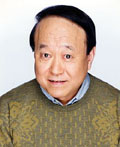
|

|
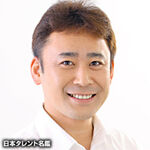
|
| Minami Takayama as Kitarō |
Isamu Tanonaka as Medama-Oyaji Youaltepuztli |
Hiromi Konno as Neko-Musume |
Wataru Takagi as Nezumi-Otoko Shibaten |
| Main Cast | ||
|---|---|---|
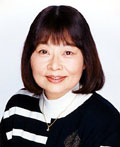
|
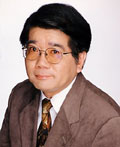
|
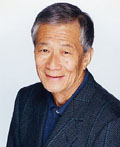
|
| Keiko Yamamoto as Sunakake-Babaa Shisa |
Naoki Tatsuta as Konaki-Jijii Nurikabe |
Jōji Yanami as Ittan-Momen |
| Main Recurring Cast | |||||
|---|---|---|---|---|---|

|

|

|

|
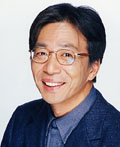
|
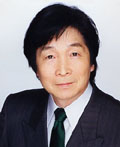
|
| Yūko Maruyama as Kawauso |
Haruna Ikezawa as Amabie |
Machiko Toyoshima as Rokuro-Kubi Kuro |
Sara Nakayama as Yobuko |
Hideyuki Tanaka as Bakerō |
Toshio Furukawa as Aobōzu |
| Recurring Cast | ||||
|---|---|---|---|---|

|

|

|

|
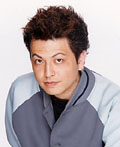
|
| Tomoko Naka as Ohaguro-Bettari Jion-Ō |
Yasuhiro Takato as Kasa-Bake Wild Kyūso |
Masato Hirano as Abura-Sumashi |
Takeshi Kusao as Makoto Washio |
Hikaru Midorikawa as Kuro-Karasu |
| Recurring Cast | |||||
|---|---|---|---|---|---|
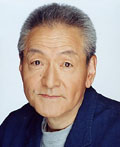
|
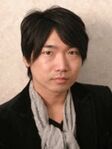
|
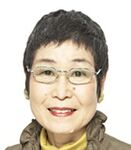
|
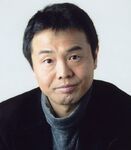
|
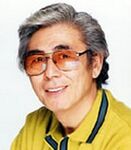
|
 |
| Takeshi Aono as Nurarihyon |
Katsuyuki Konishi as Shu no Bon Azuki-Arai Dracula III |
Reiko Suzuki as Jakotsu-Babaa |
Masami Kikuchi as Kamaitachi |
Hidekatsu Shibata as Backbeard |
Ai Nonaka as Zambia |
| Semi-Recurring Cast | ||||
|---|---|---|---|---|

|
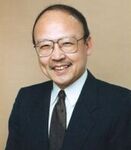
|

|

|

|
| Daisuke Gōri as Enma-Daiō |
Masashi Hirose as Gokan-Ō |
Eiji Takemoto as Sō-Daiō |
Masumi Asano as Miu |
Hiro Shimono as Kai |
| Semi-Recurring Cast | |||||
|---|---|---|---|---|---|

|

|
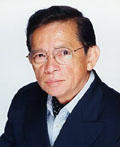
|

|

|

|
| Mayumi Tanaka as Nurikabe's Wife Kemedama |
Hisao Egawa as Tsurube-Otoshi |
Kōji Yada as Ido-Sennin |
Naomi Kusumi as Yagyō-san Dai-Tengu |
Masaya Takatsuka as Tsurube-Bi |
Daisuke Sakaguchi as Tofu-Kozō |
| Semi-Recurring Cast | |||||
|---|---|---|---|---|---|

|

|

|

|
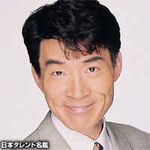
|
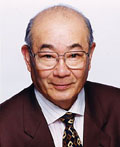
|
| Mie Sonozaki as Aoi |
Rumi Kasahara as Yuki-Jorō |
Fumihiko Tachiki as Akamata |
Jōji Nakata as Yadōkai |
Bin Shimada as Chi |
Chikao Ōtsuka as Hakusanbō |
Guest Cast
- Voice actors who voiced main characters in previous adaptations are listed bold.
- The 50 Kaitens - Themselves
- Mai Aizawa
- Kenji Akabane
- Hidemi Anzai
- Yoshiyuki Arai - Tanaka
- Kae Araki
- Tomohisa Asō - Kyōkotsu and others
- Ai Bandō
- Chafūrin - Pii
- Isshin Chiba - Langsuyar, Kankichi
- Shigeru Chiba
- Chō - Tantanbō
- Misato Fukuen
- Kōhei Fukuhara - Tengu Police, Sara-Kozō 3 and others
- Kenji Hamada
- Kōji Haramaki - Raikubi and others
- Kōichi Hashimoto
- Kumiko Higa
- Ryō Hirohashi - Zashiki-Warashi and others
- Yukiko Hirotsu
- Aya Hisakawa
- Nobuyuki Hiyama - Mahi Mahi
- Katsuhisa Hōki - Jubokko
- Mitsuaki Hoshino
- Kazuya Ichijō
- Atsushi Ii
- Chigusa Ikeda
- Michihiro Ikemizu
- Naoki Imamura
- Tetsu Inada - Sakabashira, Katasharin and others
- Fumiko Inoue
- Kikuko Inoue - Kame-hime
- Norihiro Inoue - Count Dracula
- Tarō Ishida - Elite
- Unshō Ishizuka - Makura-Gaeshi
- Kanae Itō
- Hiroshi Iwasaki - Tsujigami
- Mitsuo Iwata - Kubire-Oni
- Hirohiko Kakegawa - Suiko, Kami-sama, Takagi
- Akemi Kanda
- Tomoko Kaneda - Nami-Kozō
- Hidehiko Kaneko - Kappa, Tengu and others
- Yoshihiro Kanemitsu - Tengu Police and others
- Yui Kano
- Yūta Kasuya - Gremlin, Sara-Kozō 2 and others
- Emiri Katō
- Masako Katsuki - Osakabe-hime
- Nanaho Katsuragi - Numagozen
- Tomoko Kawakami Gorgon
- Machiko Kawana
- Yōko Kawanami - Monroe, Vampire Tree
- Miyuki Kawashō
- Yasuhiko Kawazu - Fukubi, Mōryō and others
- Mami Kingetsu - Shiro-Kihatsu, Futakuchi-Onna
- Atsushi Kisaichi - Hidemaru, Kyushu kappa and others
- Reiko Kiuchi - Kamanari, Kenji
- Michitaka Kobayashi
- Rika Komatsu
- Yuka Komatsu
- Takehiro Koyama - Tanuki
- Takehito Koyasu - Panther
- Rie Kugimiya
- Motoko Kumai
- Taiten Kusunoki - Shōkera
- Hōko Kuwashima - Dodomeki, Honeta
- Mitsuaki Madono - Gion-Ō, Itsu-Maden
- Ai Maeda
- Noboru Maeda - Yamada
- Yui Makino
- Mami
- Eiji Maruyama
- Yasunori Masutani - Hikubi and others
- Daisuke Matsubara
- Naoko Matsui - Gahi, Fuguruma-Yōbi and others
- Kōhei Matsumoto - Fune-Yūrei, Kappa and others
- Midori Matsuo - Herself
- Ako Mayama - Iso-Onna
- Shinichirō Miki - Hitotsume-Kozō
- Yūko Mita
- Hiroaki Miura
- Shunzō Miyasaka
- Kōki Miyata - Kinoshita
- Hiromu Miyazaki - Yuki-Otoko and others
- Toshiyuki Morikawa
- Masakazu Morita - Balmond
- Yasuo Muramatsu - Keukegen
- Takeshi Mori - Mōryō and others
- Takashi Nagasako - Mikoshi-Nyūdō, Yoshinaga
- Hiroshi Naka - Anagura-Nyūdō
- Mai Nakahara
- Kazuya Nakai
- Ryōhei Nakao
- Ryūsei Nakao - Onmoraki
- Kaori Nazuka
- Kōta Nemoto - Fune-Yūrei and others
- Hitomi Nibatame
- Kumiko Nishihara - Pepeko, Aka-Ei
- Hiromi Nishikawa
- Chinami Nishimura
- Tomomichi Nishimura
- Tamotsu Nishiwaki
- Keiichi Noda - Nue
- Kenji Nomura - Kimura
- Mahito Ōba - Dorotabō
- Mitsuru Ogata - Azuki-Hakari
- Hiroshi Okamoto
- Tōru Ōkawa - Saburō Nezu, Miage-Nyūdō
- Ryōtarō Okiayu
- Makiko Ōmoto
- Masaya Onosaka - Amefuri-Kozō, Hiderigami
- Fumiko Orikasa - Sayako Tsukino
- Shinichirō Ōta
- Ryūzabrō Ōtomo - Yasha, Kurobōzu, Bake-Dōrō, Golem
- Akio Ōtsuka
- Chiwa Saitō
- Kimiko Saitō
- Shirō Saitō - Gyūki
- Yuka Saitō
- Takahiko Sakaguma
- Takahiro Sakurai - Neko-Shō
- Kaoru Sasajima - Hanako
- Ai Sasaki
- Yūko Sasamoto
- Akemi Satō
- Chie Satō
- Satomi Satō - Kijimuna and others
- Yūko Satō - Mashiro
- Ikuya Sawaki - Umizatō
- Yumiko Shibata
- Yū Shimaka
- Junko Shimakata - Baby
- Naomi Shindō
- Kōzō Shioya
- Ryōko Shiraishi
- Umeka Shōji
- Yōko Sōmi - Hone-Onna
- Keiichi Sonobe
- Yumi Sudō
- Hisayoshi Suganuma
- Junichi Suwabe - Bake-Zōri
- Kiyonobu Suzuki - Osore
- Masami Suzuki - Yōkai Castle and others
- Masaru Suzuki
- Takuma Suzuki
- Reiko Takagi
- Sanae Takagi
- Hirofumi Tanaka - Mōryō, Tengu Police and others
- Ikuko Tatsu
- Nobuo Tobita - Amamehagi
- Kōichi Tōchika - Uwan
- Mai Tōdō
- Yasuhiko Tokugawa
- Yumi Tōma - Baby
- Michie Tomizawa - Kuro-Kihatsu
- Mariko Tonomura
- Rie Tozuka
- Masa'aki Tsukada
- Kyōsei Tsukui - Nobiagari
- Shinpachi Tsuji - Iwanabōzu
- Mahito Tsujimura
- Makoto Tsumura
- Hidenari Ugaki - Shiro-Uneri, Evil Spirit
- Megumi Urawa
- Misa Watanabe - Hari-Onago
- Takehiko Watanabe
- Eiji Wentz - Boyfriend
- Kappei Yamaguchi
- Mayumi Yamaguchi
- Jin Yamanoi
- Keiichirō Yamamoto
- Wakana Yamazaki - Ubume and others
- Saki Yasuda - Kijimuna and others
- Takahiro Yoshimizu
- Satsuki Yukino
Staff
Movies
- Gekijouban GeGeGe no Kitarō: Nippon Bakuretsu!! - Released December, 13, 2008.
